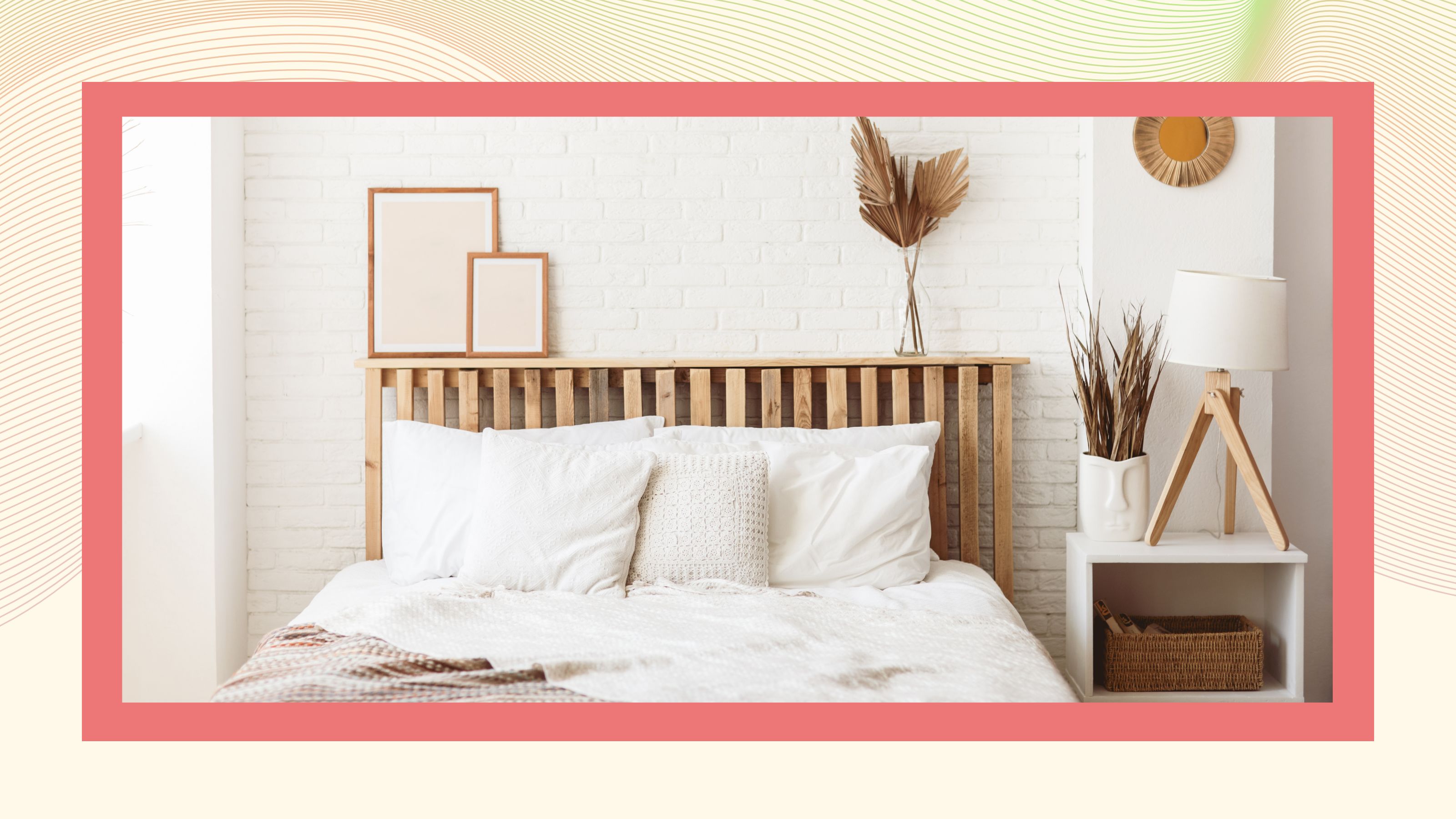
POV: You treat yo’self and have found the perfect pillow. It’s the ideal combination of squishy and supportive and you couldn’t be more obsessed. But then, out of nowhere, icky-looking yellow stains appear. It's happened to the best of us.
At first, you might assume you’ve spilled something. But that isn’t the case, there are actually a range of different causes for a yellow pillow, most of which are linked to moisture (but not the spilled drink kind).
So, where TF did these stains come from and why do they appear in the first place? And, more importantly, how do you get rid of them? We've got all the answers you need.
Why do pillows turn yellow?
JSYK, the answer is pretty gross. Pillows turn yellow due to moisture (usually bodily moisture). When this moisture seeps through the pillowcase, it can stain the actual pillow, too.
Let’s take a look at some of the most common causes of moisture that turn your pillow yellow:
1. Sweat can cause yellowing
A little sweat while you sleep is totally normal (especially during warmer weather). The issue is that as you sleep, the sweat can leak through your pillowcase and onto your pillow, causing staining to occur.
If you find yourself getting sweaty at night, attempt to cool the room down to reduce sweating.
2. Sleeping with wet hair can cause stains
If you’ve got long hair and tend to wash it before bed, you’ll most likely find that your pillow becomes stained super quickly. You see, damp hair causes pretty much the same issue as sweat, with the leftover water penetrating your pillowcase and turning it yellow.
3. Drooling in your sleep can stain your pillows
Gross, I know, but if you have a tendency to drool (hey, we all do it) in your sleep you will probably find that your pillow develops a yellow hue. Switching to sleeping on your back and staying hydrated can help.
4. Skin and hair oils can turn pillows yellow
Both hair and skin create their own oils (via the snazzy sebaceous glands). These glands create sebum, which is crucial for keeping skin and hair healthy. Sometimes they overproduce oil, which can seep into your pillow while you sleep, causing those not-so-cute yellow stains.
5. Beauty products can also stain pillows
If you have a tendency to use beauty products before bed or don't fully take them off — think: moisturizers, self-tanners, or hair masks — any leftover product that hasn’t properly absorbed into skin or hair can cause yellow stains to occur on your pillow.
Should you throw out yellow pillows?
Whether or not you should throw out a yellow pillow depends on how long you’ve had it for, as well as whether you’ve tried to clean the pillow.
The reality is that most pillows will yellow. If you’ve had your pillow for over two years and notice that it’s turned a yellow shade, then it might be time to replace it. Especially as the sweat, oil, and dead skin cells (yuck) that turn a pillow yellow can impact skin health, causing breakouts and blocked pores.
If that puffy cushion for your head is fairly new, you should first try cleaning your pillow instead. There are quite a few good pillow-cleaning hacks out there and some basic techniques worth learning. Start by soaking the pillow in cold water, before spritzing the stained areas with stain remover. Then, pop it in the wash with some mild detergent.
If this removes the staining and leaves your pillow smelling fresh, you can continue using it. If not (or if your pillow isn’t washable), then it’s probably time to say goodbye.
How to stop pillows from turning yellow in the first place
The good news is that if you’ve just got a new pillow and it’s not yet turned yellow, there are ways that you can prevent yellow stains from occurring — or at least reduce the chances.
Invest in a high-quality, waterproof pillow protector (like these SureGuard pillow protectors available at Amazon). Honestly, it will change your life. Find a pillow protector that can be removed and washed regularly, and you should be able to prevent your pillow from developing those ugly yellow stains.
Or, opt only to buy pillows that come with a protective cover (like this one on Amazon from Tempur) on them. Lots of newer pillow designs come with protective covers that can be easily removed and washed, helping to ensure that pillows last longer.







